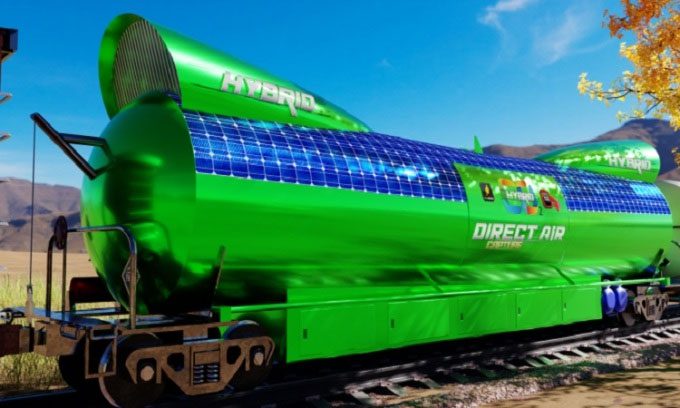CO2 Rail, a startup in the United States, plans to capture CO2 directly from the air using modified train cars that will traverse the country.

Design of modified train cars for CO2 capture. (Photo: CO2 Rail)
The research team from CO2 Rail, in collaboration with the University of Toronto, has developed a new method to leverage the existing railway network to capture CO2 from the atmosphere while passenger and freight trains operate as usual. They intend to use train cars equipped with large ventilation holes to draw in air, according to a report published on July 20 in the journal Joule.
Since the air capture will occur while the trains are traveling at high speeds, this method eliminates the need for large fans commonly found in fixed direct air capture systems, significantly saving energy. The train cars will also have chambers to collect carbon dioxide (CO2), which will then be concentrated and stored in liquid tanks. Air devoid of CO2 will be released back into the atmosphere from the rear or side of the train car.
“Every 20 hours at alternating stations for staff change or refueling, the CO2 in the storage tanks will be transferred to conventional tank cars located at that station,” shared E. Bachman, founder of CO2 Rail, with Interesting Engineering. “When a large number of tank cars are filled, a train will be formed to transport up to 10,000 tons of captured CO2 to a designated area. This is not difficult since the CO2 Rail cars are designed to operate continuously for 24 hours before needing to unload.“
In a conventional braking system, the friction from braking generates heat that is released into the air. The braking process produces enough energy to power 20 homes for a day. By using a regenerative braking system, the train can convert this energy into electricity, which is used for the direct CO2 capture process. The research team estimates that an average freight train could remove 6,000 tons of CO2 each year. With a sustainable power supply on board, this method is not only environmentally friendly but also cost-effective. The expected cost is less than $60 per ton of CO2, making the technology commercially viable.



















































